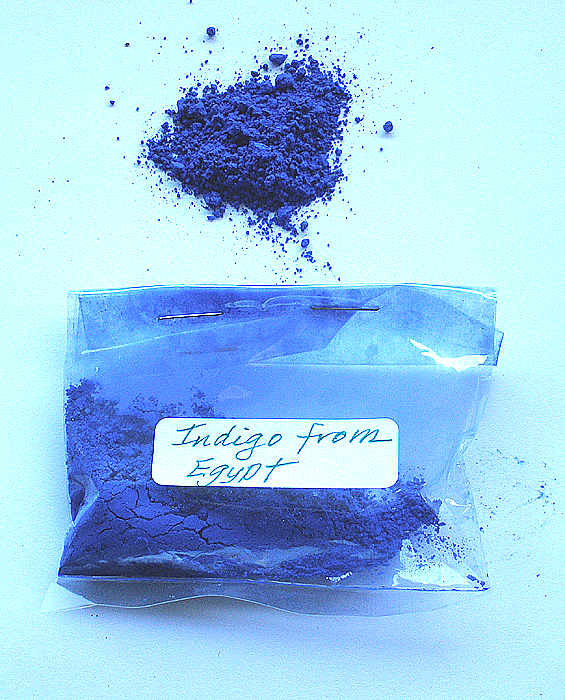These quirky stories about pigment making from the past are completely irresistible, and Philip Ball’s book, Bright Earth, is full of lively tales. The herb indigo is considered a dye rather than a pigment and is sometimes described as a lake (lac) pigment which is a commonly used word for dye.
Ball quotes from a twelfth century manuscript: ground white marble, “put…[the indigo] into hot dung for a day and a night,” mix it with foam from a cauldron “in which clothes are dyed the color of indigo.”When it is dry…it acquires a good azure color.”
The indigo shown above is some I found at a street market while visiting the Island of Philae, the Temple of Isis. Today it is used in Egyptian culture as a bluing for clothes. Indigo is an impermanent color and will fade over time, so I will not be using it in my paintings. Guess I’ll use it in the laundry, but I will definitely skip the dung.

